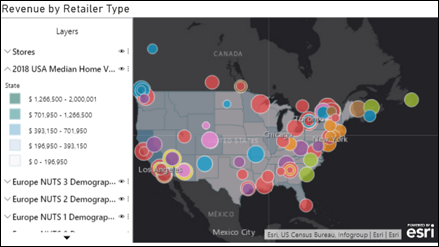

There is a chance that something is left over from the previous version of ArcGIS for Power BI that is causing some issues. For items 1 and 2, it might be good to clear the cache of Power BI Desktop and restart the application and your machine. Let's see if we can resolve them!įor items 1 and 2, I am unable to reproduce them on my machine and in a clean environment. In some cases, there could be caching issues with each version, so it would be good to rule that out.īelow are my findings from your list.

Thank you for providing me with the versions of Power BI Desktop that you are running. I was looking over this issue and I would like to help out if I can! :)

We were able to login much better, however lose some of the newer functionality in latest Hello there! My name is Anthony and I am a product engineer on the ArcGIS for Power BI visual. We installed Version: 2.95.983.0 64-bit (July 2021) - Previous monthly updates to Power BI Desktop and the Power BI service - Power BI | Microsoft Docs Will this error show up in the future once it is published to our server for others to view? We have tried uploading county and state names along with FIPS Codes to see if there would be any changes but still getting info box.Ĥ) Constant spinning of map in top right of window. When we select the link in the alert we lose settings in the map. It should be autosaving.ģ) When configuring counties and states in the map settings we keep getting the following alert. We found we have to select save first after edits before going to other pages. When you click on other Power BI pages (worksheets - bottom tabs) the settings for the map layer that is created on map page view disappears. Not sure if these are related to the other posting " Maps got broken in the last update" so I am posting specific issues we discovered.ġ) Users unable to login to Enterprise Portal - blank screen login or unable to login once 'Sign in' has been selected, no prompts or logins occur.Ģ) Losing settings in maps. Go to the Data view and select the ArcGIS map.We noticed several issues occurring as a result of the latest release of Power BI desktop within the past few days. In Power BI, this is how our simple data model will look like. We can now also load the color table into Power BI. This model is now ready, and we can already load this to the query. Then, filter out the rows that don’t have a value in the Postcode column. The append legend data will then be stacked on top of our population data.Īfter that, sort the rows in the Population column. The other one is called the Append method using the append legend table, which is what we’ll be using in this example.Īppend the Population and the append legend tables to make sure that their headers for the Population column are the same in both tables. The first one is using the Add Conditional Column feature as shown here. There are several ways to do this and I’ll show 2 of them. Adding a column is not a big deal given that we have a limited number of records. Now, we need to add segmentation to the population data. The “ to” column here represents the bin ranges where we can choose our preferred bins. In this case, we’ve taken six different bins. This enables us to visualize data in a more meaningful way.Īs a guide for our datasets, we need to create a histogram and select our bins according to the value distribution. In Power BI, we can use bins to equally group a numeric field based on a division. First, let’s create a table and name it as “ append legend”. To obtain the matching hex color code, we can use the color theme generatorin the Analyst Hub by using a screenshot of the Power BI map. Creating A Color TableĪfter that, we need to create a color table in power query with our segments, desired colors, and a sort column. Moreover, it displays the Latitude and Longitude for the postcode centroids in case we need to map them as points layer.

In this example, the dataset named as “ Population” shows the postcodes in the Netherlands around Rotterdam.


 0 kommentar(er)
0 kommentar(er)
